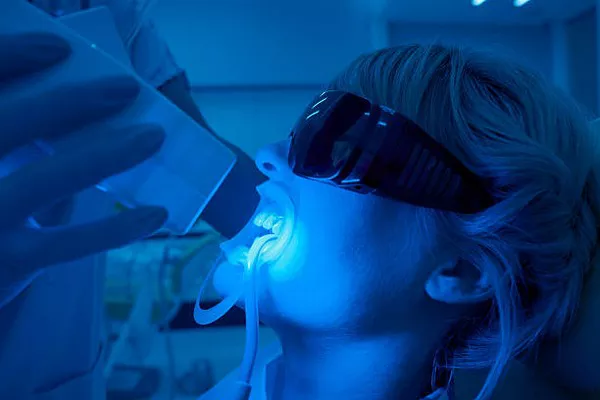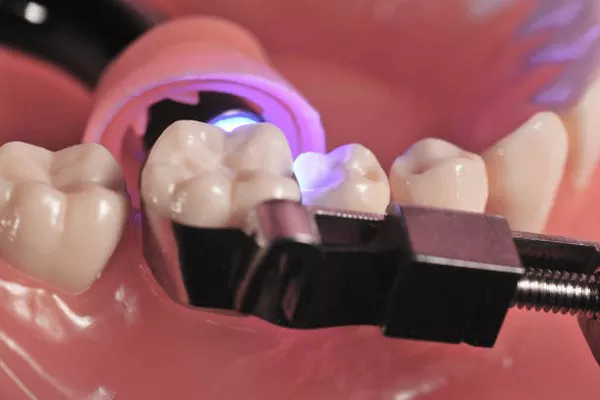Periodontal disease, commonly known as gum disease, is a prevalent condition that can significantly impact oral health if left untreated. It progresses from mild inflammation to severe tissue and bone damage, potentially leading to tooth loss. Effective treatment is crucial for managing this disease and maintaining overall dental health. This article explores the causes, progression, and treatment options for periodontal disease, emphasizing the importance of early detection and comprehensive care.
Understanding Periodontal Disease
Causes and Progression
Periodontal disease is primarily caused by bacterial plaque, a sticky, colorless film that constantly forms on teeth. When plaque is not adequately removed through regular brushing and flossing, it hardens into tartar (calculus), which can only be removed by a dental professional. The presence of tartar and bacteria can lead to gum inflammation, known as gingivitis, the mildest form of periodontal disease.
As the disease progresses, the inflammation can spread below the gum line, causing pockets to form between the teeth and gums. These pockets collect more bacteria and plaque, leading to further infection and inflammation. Over time, this can destroy the tissues and bone that support the teeth, resulting in periodontitis, the more severe form of periodontal disease.
Stages of Periodontal Disease
Gingivitis: Characterized by red, swollen gums that may bleed easily during brushing or flossing. Gingivitis is reversible with good oral hygiene and professional dental care.
Mild Periodontitis: The inflammation extends to the bone, causing minor bone loss. Patients may notice slight pocket formation and early signs of gum recession.
Moderate Periodontitis: Increased bone loss, deeper pockets, and more noticeable gum recession. Teeth may start to feel loose.
Severe Periodontitis: Significant bone loss, deep pockets, severe gum recession, and loose teeth. Patients are at high risk of tooth loss.
Importance of Early Detection and Intervention
Early detection and treatment of periodontal disease are critical to preventing its progression and avoiding more severe complications. Regular dental checkups, professional cleanings, and maintaining good oral hygiene practices are essential in catching gum disease in its early stages and implementing effective treatment strategies.
Treatment Goals
The primary goals of periodontal treatment are to:
Stop the Progression of Gum Disease: Halt the advancement of the disease to prevent further damage to the gums and supporting structures.
Reduce Inflammation and Infection: Minimize the inflammation and bacterial infection that contribute to tissue and bone destruction.
Preserve Existing Teeth: Maintain the natural teeth for as long as possible by stabilizing the condition of the gums and bones.
Restore Healthy Gums and Bone: Encourage the regeneration of healthy gum tissue and bone where possible, and improve the overall health and function of the mouth.
Non-Surgical Treatment Options
Scaling and Root Planing
Scaling and root planing is a deep cleaning procedure that removes plaque and tartar from above and below the gum line. This treatment involves two steps:
Scaling: The dentist or dental hygienist uses specialized instruments to remove plaque and tartar from the tooth surfaces and beneath the gums.
Root Planing: The root surfaces of the teeth are smoothed to make it more difficult for bacteria to adhere and to allow the gums to reattach to the teeth more effectively.
This procedure can be performed under local anesthesia to ensure patient comfort. It is often the first line of treatment for mild to moderate periodontal disease and can significantly reduce inflammation and pocket depths.
Antibiotics
Antibiotics may be used in conjunction with scaling and root planing to combat bacterial infection and reduce inflammation. These can be administered in several forms:
Topical Antibiotics: Applied directly to the periodontal pockets, such as gels or microspheres containing antibiotics.
Oral Antibiotics: Prescribed to treat more widespread infection and inflammation.
Antibiotic therapy can help control bacterial growth and support the healing process.
Oral Hygiene Instruction
Proper oral hygiene is crucial for preventing and managing periodontal disease. Patients should be educated on effective brushing and flossing techniques, including:
Brushing: Use a soft-bristled toothbrush and fluoride toothpaste to brush at least twice a day. Electric toothbrushes can be more effective at removing plaque.
Flossing: Floss daily to remove plaque and food particles from between the teeth and below the gum line.
Regular Dental Checkups: Schedule regular dental visits for professional cleanings and examinations to monitor oral health and catch any early signs of gum disease.
See Also: How Much Is Periodontal Disease Treatment
Surgical Treatment Options
For advanced cases of periodontal disease that do not respond adequately to non-surgical treatments, surgical interventions may be necessary.
Gingival Grafting
Gingival grafting, also known as gum grafting, is a procedure that involves taking tissue from another part of the mouth (often the palate) and attaching it to areas where gum recession has occurred. This helps to:
- Cover exposed roots.
- Reduce sensitivity.
- Prevent further gum recession.
- Enhance the appearance of the gum line.
Bone Grafting
Bone grafting is used to regenerate bone that has been lost due to periodontal disease. This procedure involves placing bone graft material in areas of bone loss to encourage new bone growth. Types of bone graft materials include:
- Autografts: Bone taken from another part of the patient’s body.
- Allografts: Donor bone from a tissue bank.
- Xenografts: Bone from an animal source, typically bovine.
- Synthetic Grafts: Man-made materials that mimic natural bone.
Bone grafting can help restore the foundation that supports the teeth and enhance the overall stability of the mouth.
Flap Surgery
Flap surgery, or pocket reduction surgery, involves making small incisions in the gums to lift them back and expose the roots and bone for thorough cleaning. This procedure allows the dentist to:
- Remove tartar and bacteria from deep periodontal pockets.
- Smooth irregular surfaces of the damaged bone.
- Reposition the gums to fit more snugly around the teeth, reducing pocket depths and preventing further bacterial accumulation.
Guided Tissue Regeneration
Guided tissue regeneration (GTR) is a technique that uses a special membrane to encourage the growth of new bone and tissue in areas affected by periodontal disease. The membrane is placed between the bone and gum tissue to prevent the gum from growing into the bone defect, allowing the bone to regenerate. GTR can be used in conjunction with bone grafting to enhance the healing process.
Maintenance and Prevention
Long-term maintenance and prevention are crucial for preventing the recurrence of periodontal disease and ensuring the longevity of treatment outcomes.
Regular Follow-Up Appointments
Regular dental checkups and professional cleanings are essential for monitoring periodontal health and maintaining treatment results. These appointments allow the dentist to:
- Assess the condition of the gums and bone.
- Remove any accumulated plaque and tartar.
- Provide additional treatments if necessary.
Good Oral Hygiene Practices
Maintaining good oral hygiene is critical for preventing the recurrence of periodontal disease. This includes:
- Brushing and Flossing: Continue to brush and floss daily to keep plaque and bacteria at bay.
- Antimicrobial Mouthwash: Use an antimicrobial mouthwash as recommended by your dentist to reduce bacteria and freshen breath.
- Healthy Lifestyle: Adopt a healthy lifestyle that includes a balanced diet, regular exercise, and avoiding smoking, which can exacerbate periodontal disease.
Healthy Lifestyle
Encourage patients to adopt a healthy lifestyle to support their oral and overall health. This includes:
Balanced Diet: Consume a diet rich in vitamins and minerals to support gum and bone health.
Quit Smoking: Smoking is a significant risk factor for periodontal disease and can impede healing. Quitting smoking can improve treatment outcomes and overall health.
Manage Stress: Chronic stress can negatively impact oral health by contributing to inflammation and reducing the body’s ability to fight infection.
Consult with a Dentist
While this information provides a general overview of periodontal disease treatment, it is essential to consult with a dentist for personalized assessment and treatment planning. Each patient’s situation is unique, and a dentist can provide tailored advice and interventions to address specific needs.
Personalized Advice
This article serves as a general guide, but individual treatment plans will vary based on the severity of the disease, overall health, and other factors. A comprehensive dental examination and consultation are necessary to determine the best course of action.
Individual Assessment
A thorough assessment by a dentist or periodontist will include:
- Detailed medical and dental history review.
- Comprehensive oral examination.
- Diagnostic tools such as X-rays to evaluate bone loss and periodontal pockets.
Based on this assessment, a personalized treatment plan will be developed to address the patient’s specific condition and treatment goals.
Conclusion
Periodontal disease is a serious condition that requires timely and effective treatment to prevent progression and preserve oral health. Understanding the causes, stages, and treatment options is essential for managing this disease effectively. Non-surgical treatments like scaling and root planing, antibiotics, and improved oral hygiene can manage mild to moderate cases. In more advanced stages, surgical interventions such as gingival grafting, bone grafting, flap surgery, and guided tissue regeneration may be necessary.
Regular follow-up appointments, good oral hygiene practices, and a healthy lifestyle are crucial for maintaining treatment outcomes and preventing recurrence. Always consult with a dentist for a personalized assessment and treatment plan tailored to your specific needs. By taking proactive steps and seeking professional care, patients can effectively manage periodontal disease and maintain a healthy, functional smile.
You Might Be Interested In






























